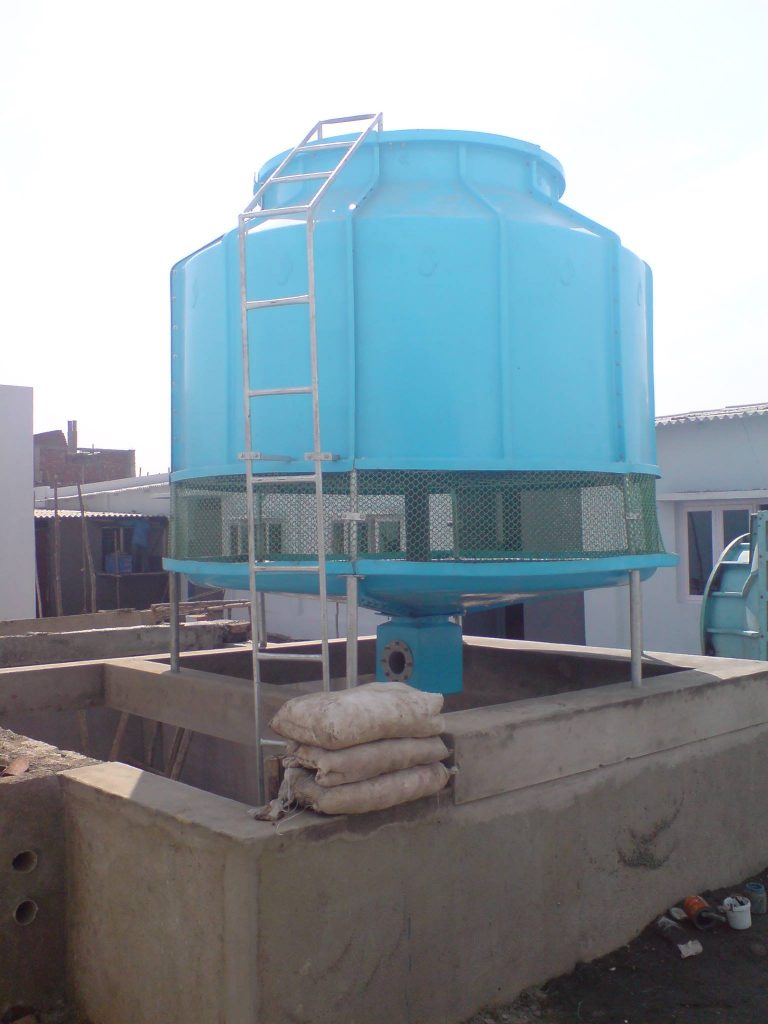Wet Cooling Tower Vs Dry Cooling Tower
This is a crucial distinction in industrial and power plant cooling, with the choice having major implications for water usage, cost, and efficiency.
The fundamental difference lies in how they reject heat: one uses the evaporation of water (wet), and the other uses only sensible heat transfer to the air (dry).
At a Glance: Core Difference
| Feature | Wet Cooling Tower | Dry Cooling Tower |
| Principle | Evaporative Cooling (Latent Heat Transfer) | Sensible Cooling (Convection, like a car radiator) |
| Water Usage | High (Consumes water through evaporation) | Very Low to Zero (Closed-loop, no water loss) |
| Cooling Effect | Cools water to near the ambient wet-bulb temperature | Cools water to near the ambient dry-bulb temperature |
| Energy Efficiency | Very High (Evaporation is highly effective) | Lower (Less effective heat transfer method) |
| Cost | Lower Capital Cost, Higher Operational (Water & Treatment) Cost | Higher Capital Cost, Very Low Operational Cost |
| Visible Plume | Yes, a large white plume of vapor is always generated. | No plume. |
| Risk of Legionella | Yes, requires rigorous water treatment. | No. |
Detailed Breakdown
Wet Cooling Tower (Evaporative Cooling)
This is the traditional, most common type of cooling tower.
- How It Works: Hot water from the process is pumped to the top of the tower and distributed over a “fill” (a large medium designed to create a vast surface area). Air is drawn through this falling water by fans. A small portion of the water (typically 1-2%) evaporates, absorbing a large amount of latent heat from the remaining water and cooling it significantly. The cooled water collects in a basin and is pumped back to the process.
- Key Advantage: Performance.
- Wet-bulb temperature is almost always significantly lower than dry-bulb temperature. This allows a wet tower to produce much colder water, which leads to a more efficient power plant or industrial process (e.g., a stronger vacuum in a steam condenser).
- Key Disadvantages: Water and Environmental Impact.
- High Water Consumption: Not suitable for arid regions.
- Water Treatment: Requires constant chemical treatment to prevent scaling, corrosion, and biological growth (like Legionella bacteria).
- Visible Plume: The saturated exhaust air creates a visible vapor plume, which can cause icing on nearby roads and structures in cold climates and may be seen as visual pollution.
- Drift: Small water droplets can be carried out of the tower, potentially spreading water treatment chemicals.
- Common Use Cases: Power plants and industrial facilities located in areas with abundant water resources where high process efficiency is the top priority.
Dry Cooling Tower (Air-Cooled Heat Exchanger)
This system operates like a giant radiator for an entire plant.
- How It Works: The process fluid (water or another coolant) is kept in a completely closed loop. It is pumped through a vast array of finned tubes (the heat exchanger bundle). Large fans force ambient air across the outside of these tubes, removing heat through sensible heat transfer only. No water is evaporated.
- Key Advantage: Water Conservation.
- It eliminates almost all water consumption related to cooling. This is its primary reason for existence.
- Key Disadvantages: Cost and Performance.
- Higher Cost: Requires vastly more heat transfer surface area (finned tubes) and much larger fans to move air, leading to a much higher capital cost.
- Lower Efficiency: Since it can only cool the fluid to near the dry-bulb temperature, the process it serves runs less efficiently, especially on hot days. On a 95°F (35°C) day, a dry system might only cool water to 105°F (40°C), while a wet system could cool it to 85°F (29°C).
- Larger Footprint: The equipment is significantly larger and more massive for the same cooling duty.
- Common Use Cases:
- Power plants and industrial facilities in arid, water-scarce regions.
- Applications where plume avoidance is critical.
- Smaller processes where minimal maintenance is a key requirement.
Hybrid Cooling Towers
To get the best of both worlds, Hybrid Cooling Towers exist. They combine both technologies:
- How They Work: They primarily operate as a dry tower. However, during the hottest parts of the day or during peak load periods, a water spray system is activated on the air intake side. This pre-cools the incoming air evaporatively, dramatically boosting the dry tower’s performance without consuming as much water as a full wet tower.
- Benefit: They offer most of the water savings of a dry system with significantly better performance on hot days, though with greater complexity and cost.
Summary: How to Choose?
The choice between wet and dry cooling is a fundamental engineering and economic decision.
- Choose a WET Cooling Tower if:
- Water is readily available and inexpensive.
- Maximizing process efficiency (lower operating temperature) is the top priority.
- Capital cost is a major concern.
- The environmental impact of water consumption and vapor plume is acceptable.
- Choose a DRY Cooling Tower if:
- The plant is located in an arid region with severe water constraints.
- The environmental mandate is to eliminate water consumption and vapor plume.
Higher capital cost and lower efficiency are acceptable trade-offs for water
